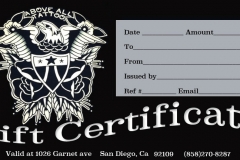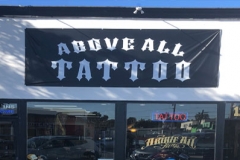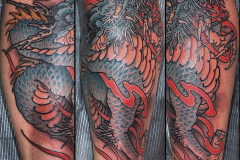Septum Piercings

Septum Piercing
In the world of body modifications, more specifically in the world of piercings, there is an immense variety of ways in which to express yourself. Within this plethora of options, one has always stood out to me: The Septum Piercing.
So, if you are thinking about getting your first piercing and are considering the many options, or if you are a piercing veteran looking to further elevate your aesthetic expression, read on because today we’re going to learn all about septum and septum piercings.
What Is The Septum?
The septum is an osteocartilaginous laminar structure that is located in the middle of the nasal pyramid, and that is vertically and anteroposteriorly arranged. In more simple terms, the septum is the wall of thin cartilage that divides the nostrils into two distinct spaces.
Interestingly enough, when you get your septum piercing you don’t actually pierce the septum itself, but rather a small section of tissue that connects the cartilage of the septum to the fleshy underside of the nose.
Septum piercings aren’t anything new; in fact, ancient Mayan warriors used to pierce their septums as a ritualistic offering to the gods of War and Death. Across many cultures of Mesoamerica, septum piercings were used as a symbol of wealth and were considered extremely aesthetically pleasing.
Septum piercings were also very common in India, where it was performed to honor the Goddess Parvati. In China, it is believed that the septum is linked to a powerful acupuncture site that can open up the body’s flow of energy.
Regardless of its history, presently, the septum piercing is performed across the world as a sign of having a fashion-forward or daring style. Some people choose it for its rebellious connotation, while many others get them for highly personal reasons.
The septum piercing is highly versatile and there are many options that allow for a high degree of personalization. Not to mention that it can be easily hidden if you choose to do so, because when you take it out there is no visible evidence left behind.
Does It Hurt To Have A Septum Piercing?
As with all body piercings, the amount of pain you can experience is highly subjective and will vary from one person to the next. This can also vary based on the skill and level of experience of the person doing the piercing, the pain threshold of the person getting the piercing, and other variables.
Having said that, most people who have gotten various types of body piercings agree that the septum piercing is not particularly painful if performed properly.
What About The Healing?
Most body piercings are considered safe and most of them will heal without complication and without the need for specialized aftercare. However, the healing of a septum piercing can take a bit longer than other types of piercing because the nose is constantly exposed to the elements and environmental contaminants.
Another thing to keep in mind is that allergy sufferers will experience a longer healing time and perhaps more discomfort due to the irritation generated by constant running nose and sneezing.
Follow the tips below to improve the chances that your septum piercing heals properly and effectively.
Wash you piercing daily. Make sure you do so after showering to eliminate as many bacteria as possible. Make sure that your hands are clean when you do so. When you wash the piercing, make sure to use a lukewarm solution, such as sterile saline solution or lukewarm water and mild soap.
Clean both sides of the piercing and gently swab away any discharge that is present.
The nose is constantly moist and this tends to slow down healing. Thus, you should keep cotton swabs or strips of gauze handy to pat dry the zone and keep moisture to a minimum. This will go a long way to speed up the healing process.
Make sure to keep touching or moving the piercing to a minimum. The more you touch the area the higher the chances of catching an infection and experiencing complications.
Never remove the jewelry before the healing process is complete. It will be extremely difficult to put back in, plus you increase the probability of bacteria entering the fresh wound.
Avoid using alcohol, hydrogen peroxide, and other solutions commonly associated with wound care. These solutions can actually impair the healing process.
Try your hardest not to pick away at any scabs that form. When you lift a scab, there is a possibility that you can reopen a wound that has begun to heal. This is not only a setback but also another way to introduce potentially dangerous bacteria into your body.
Refrain from changing the initial piece of jewelry for at least 1 month after the piercing was performed. After 30 days, a professional piercer should check your piercing and make sure that healing is occurring properly.
During the summer months avoid hitting the beach or swimming in pools, at least during the first few weeks after getting a septum piercing. Remember that the salt from the sea and the chlorine from pool water can act as potent irritants and cause significant discomfort, as well as delay the healing process.
The more you pay attention to properly allowing your wound to heal, the better results you will experience. Furthermore, you significantly minimize the risk of complications and discomfort when you do so.





One Response Leave a comment